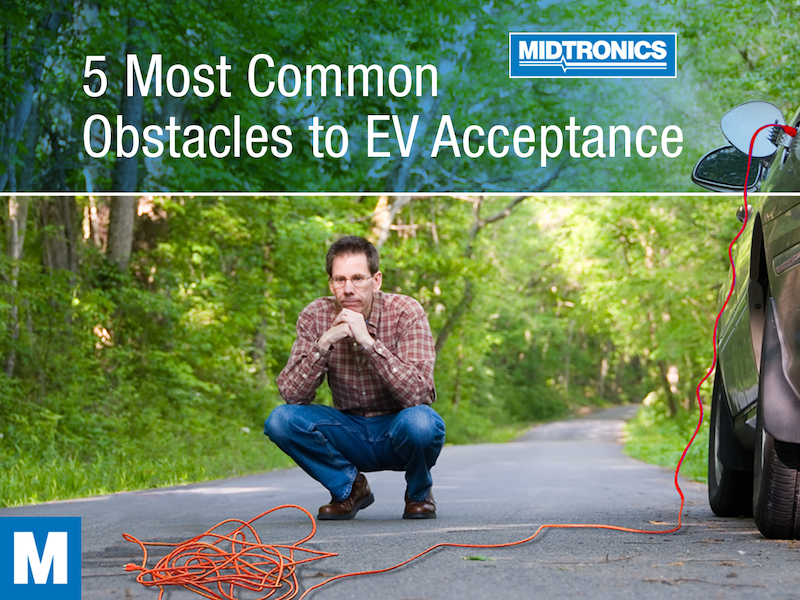The United States has plans to ban the sale of gas-powered passenger vehicles by 2035. While that might be a moving target, the movement toward electric vehicles isn’t going away. According to the J.D. Power 2022 U.S. Electric Vehicle Consideration Study, nearly, one in four car shoppers is “very likely” to look long and hard at an EV as their next vehicle, and consumer consideration is climbing.
Why are electric cars gaining attention? First, it should be answered as to why there’s a drive to pivot away from fossil fuels and into electric energy to power vehicles. It’s no secret that the primary motivation is to reduce tailpipe emissions significantly to lower the carbon footprint generated from transportation. However, other benefits of EVs include:
- More direct performance with torque generated from 0 RPM and up.
- Nearly silent operation, reducing noise pollution and improving the driver experience.
- Fewer repairs and maintenance to do because of fewer moving parts.
- Cleaner energy as the fuel source.
Although other options have come to market including hydrogen fuel-cell vehicles, the relative simplicity of all-electric transportation has brought it to the forefront, embraced by lawmakers and carmakers alike.
However, there remain several major hurdles to overcome before EVs are ready to take over for internal combustion engine vehicles as the primary fuel source in the fleet. Between infrastructure and technology, as well as consumer perception and skepticism, these are five of the most common obstacles to consumer adoption of electric vehicles.
Common obstacles to EV adoption among consumers
But not everything is simple about EVs. As recently as 2021, electric cars represented less than 10% of the global car market, and the US sales contained only 3% or so. Just two years earlier, only 2% of vehicles sold in the US were all-electric. What’s preventing the masses from adopting electrification boils down, in many cases to these five key factors.
Skepticism in the technology
Despite major leaps and bounds in technology over the past decade – since the earliest models came to market – customers still haven’t grown to trust the tech. Compared to more than a century of vehicle evolutions in the gas-powered segment, electrification appears to be fledgling. Generally speaking, consumers have been trained to avoid adoption the first generation of any vehicle run, whether it’s early adoption of EVs or new tech in ICE vehicles.
It will simply take time for vehicle shoppers to familiarize themselves with EVs better over the coming years. Education by carmakers and a narrowing window of options will also contribute to “encouraging” skeptics to consider an EV, but nothing is more convincing than experiencing a drive personally.
Lack of availability
The supply chain is still floundering, struggling to recover from the effects of the pandemic, the labor shortage, and issues transporting manufacturing materials and products amid rising shipping costs. Subsequently, vehicle production has been behind the demand for them worldwide. Fewer EV models have reached market than expected by this point, so the number of consumers impatiently waiting for their desired vehicle to be in stock continues to grow.
And compared with ICE vehicles, there are very few options for BEVs. In the US, there are roughly 32 models available while more than 1,000 models and trim levels are available for fossil-fueled vehicles. The selection pales in comparison, and lack of choice is a disincentive for car shoppers. Fortunately, the EV model count is expected to grow to 124 by 2024, encompassing more options in the most desirable segments like SUVs and pickup trucks.
Insufficient battery range
According to Deloitte’s 2022 Global Automotive Consumer Study, the primary concern that 20% of shoppers cite as to why they don’t intend to buy a BEV is the driving range. Midtronics’ Senior Product Manager of Aftermarket, Rob Salach, has experienced range anxiety with his own BEV, carefully planning his week to account for the charging required to travel the miles necessary.
Overall, the average EV range in mid-2022 was 194 miles with the longest range calculated around 396 miles. The Deloitte survey revealed that shoppers would begin considering an EV if the driving range was, on average, 518 miles. There’s some distance to cover between where battery tech is right now compared to what’s expected.
Lack of charging infrastructure
A bipartisan infrastructure bill adds $5 billion in federal funds to help build out a national network of EV charging stations. Reading between the lines, the funding demonstrates that there aren’t enough charging stations to serve the American fleet currently, and certainly not for the expected exponential increase in adoption over the next decade or so. Unlike gas stations, there are precious few EV charging stations in the country, even along major routes and in urban areas.
The lack of charging infrastructure is one such obstacle to EV adoption. If consumers can’t be confident they’ll find the resources to “fill” their cars when they need to, they see it as a safer play to stick with their current car or another ICE-powered vehicle. And both battery tech and charging tech need to progress to make it faster to add the necessary charge.
Cost
And finally, the cost to purchase an EV is substantially higher than a comparable ICE vehicle. There are a few cost-effective options on the market, but they typically have shorter ranges and aren’t the size or style that attracts most US purchasers. Where the average price of an ICE-powered vehicle has climbed to $44,000, the average price to purchase an electric car is over $66,000 – more than 50% higher.
Consumers are quick to see that there are savings in fuel costs and maintenance, but the cost comparison means it can easily take six to eight years – or more – to compensate for the higher initial sale price.
Of course, the battery is the major component in an EV that drives the price way up. As more energy-dense batteries are developed that cost less to manufacture, it will lower the price of EVs. However, that could be several years away.
There’s no question that EVs are a cleaner vehicle to operate and will be a big part of future transportation. Still, these hurdles need to be overcome in order for the US fleet to achieve the long-term goal of banning the sale of ICE vehicles.




